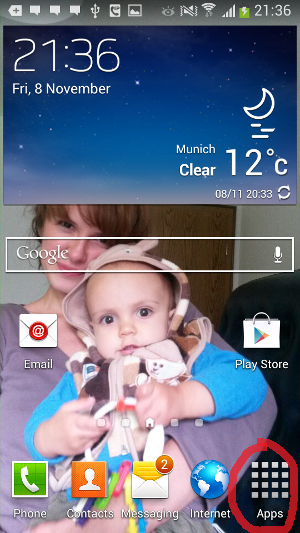In this post I will share my experience of adding a logo in front of the site title when using the Twenty Thirteen theme for WordPress. I’ve been learning WordPress basics in the last couple of months, but I am no expert to create a custom theme, so I will stick to default ones for the moment. Up until today I have been using the Twenty Twelve theme – this is fully a responsive theme and with the right plugins you get a pretty good functionality, at least for a technical blog, …but I find it a little dull. So I said why not try some more colour? Well, the Twenty Thirteen theme is certainly an answer for that. I gave it a try on my localhost, I liked it, so I decided to give it a try in production. This is so cool about WordPress, you can change the look of your pages pretty fast, as long as you haven’t invested much too effort in customizing one theme.
How to enable Android USB Debugging on Samsung Galaxy S4 mini (in pictures)
SEO: Friendly URL construction with Spring MVC
Contents
What is a friendly URL?
Since I started to really use the internet, about 13 years ago, I liked to bookmark useful and interesting links for later access. Of course my bookmarks list has been growing steadily ever since and it’s become difficult to just LOOK for some bookmark on a topic I remember I might have added to the list. So I do it the Google-way, I search for it by typing some relevant words. Besides tags and good titles, URLs that contain some of the words I look for, land at the top of the search results. The same is valid for search engines, who favour friendly or well constructed URLs.
 Source code for this post is available on Github - podcastpedia.org is an open source project.
Source code for this post is available on Github - podcastpedia.org is an open source project.
Spring MyBatis integration example
Contents
1. Why Mybatis?
Short answer: simple, lightweight, open source, dynamic sql and sql control, previous iBATIS knowledge. Now let me elaborate a little bit on the subject. Back in the old days of Podcastmania.ro, see Story of Podcastpedia.org, I used my own MVC like framwork based on servlets to develop the web application and plain old JDBC to access the database. After “upgrading” to Spring MVC, I started using Spring’s JdbcTemplate for database access, which removed some of the boilerplate code. Later I got involved in projects where database access occured via iBATIS – Hibernate was there for a long time, but because of legacy reasons and no database normalization whatsoever, iBATIS was the optimal choice. By about the same time MyBatis had been just launched, so I read the documentation, did a pilot, liked it and switched from Spring’s JdbcTemplate to MyBatis. In the mean time I’ve been working on projects with Hibernate and JPA 2.0 with Hibernate used for persistence, so I’d say I have a pretty good overview on the most popular Java Persistence Frameworks. You have currently four major options:
- JPA/Hibernate
- myBatis (former iBatis)
- Spring JDBC
- JDBC
 Source code for this post is available on Github - podcastpedia.org is an open source project.
Source code for this post is available on Github - podcastpedia.org is an open source project.
Spring caching with Ehcache
1. Why use Caching?
Are you aware of the Pareto principle, also known as the 80-20 rule, which states that, for many events, roughly 80% of the effects come from 20% of the causes? Well, this principle also holds true for Podcastpedia.org, where most of the traffic is driven by some of the podcasts, and only some of the search criteria are used the most. So why not cache them?
For application caching Podcastpedia uses Ehcache, which is an open source, standards-based cache for boosting performance, offloading your database, and simplifying scalability. It’s the most widely-used Java-based cache because it’s robust, proven, and full-featured.
This post presents how Ehcache is integrated with Spring, which is the main technology used to develop Podcastpedia.org
 Source code for this post is available on Github - podcastpedia.org is an open source project.
Source code for this post is available on Github - podcastpedia.org is an open source project.

